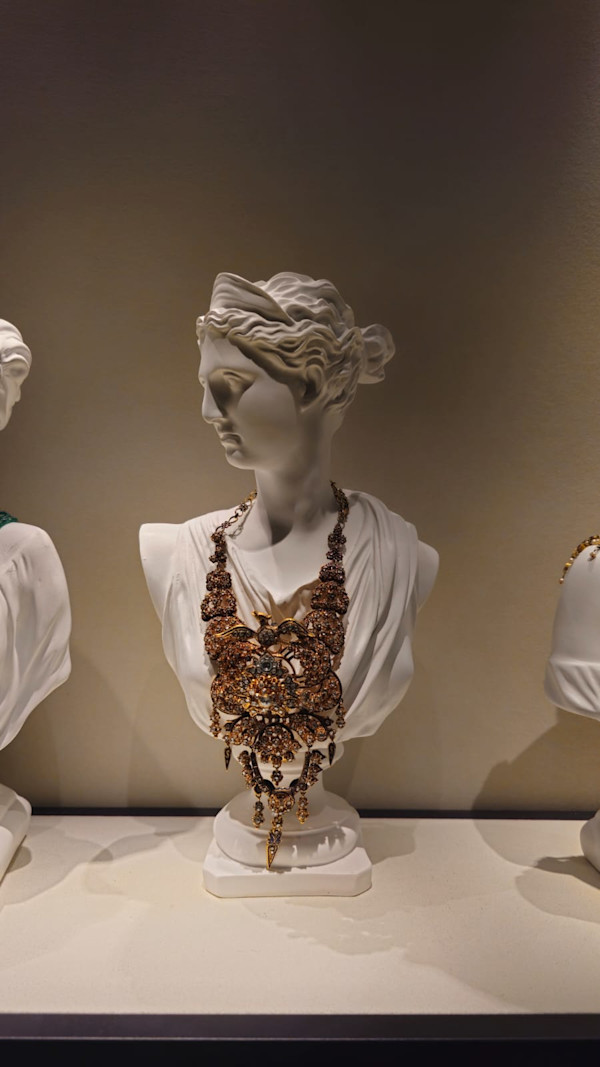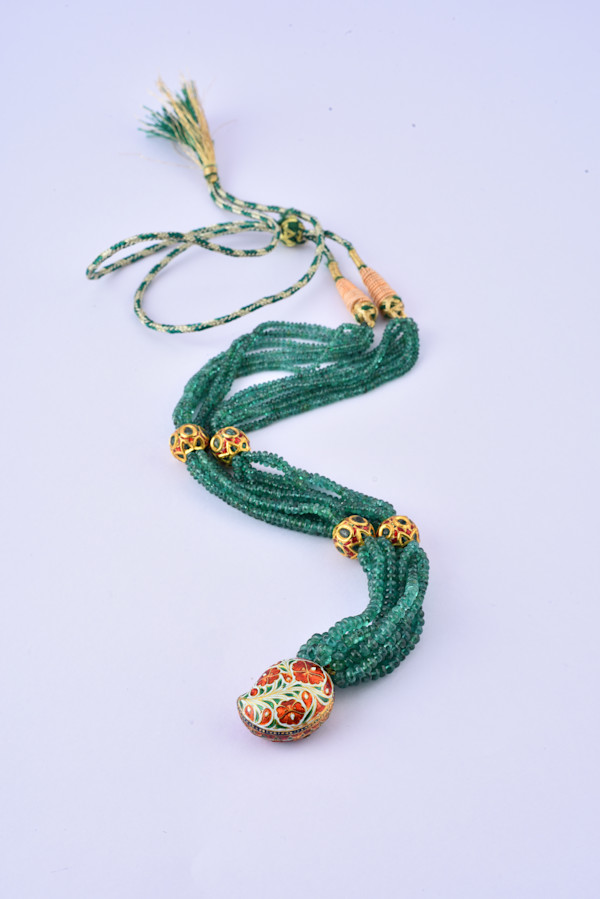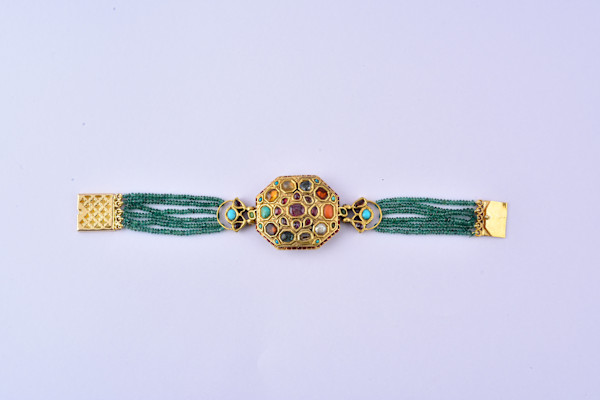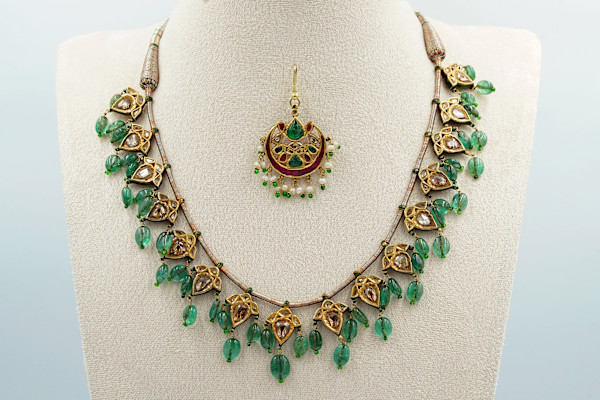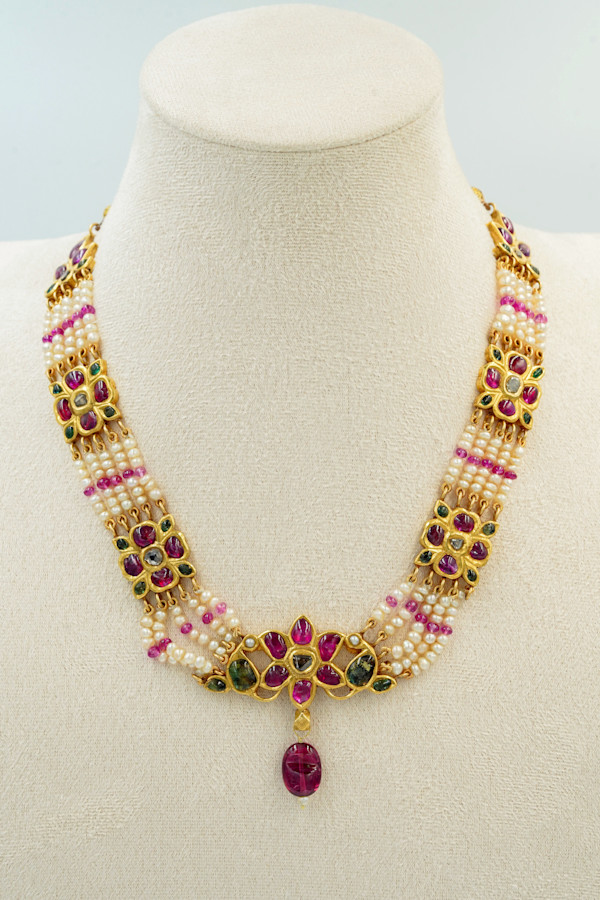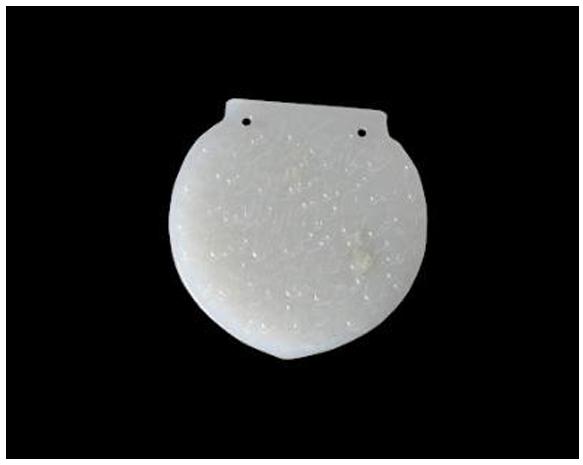
This finely crafted rare jade pendant, attributed to the Mughal Emperor Shah Jahan and dated 1040 AH (1631-32 AD), is an exceptional example of imperial Mughal craftsmanship and calligraphy. Carved from a single piece of pale green jade, the pendant features an elegantly inscribed Quranic verse (Ayat al-Kursi) along with the phrase Wa An Yakad, emphasizing divine protection and spiritual power. The inscription also includes a genealogy of Shah Jahan, identifying him as Shah Jahan Padshah ibn Jahangir Padshah ibn Akbar Padshah, reinforcing his royal lineage. This form of inscription was common in Mughal imperial objects, signifying legitimacy and divine sanction for the ruler’s authority. The shape of the pendant is distinct, with a rounded lower section and a slightly indented upper portion containing two small perforations for suspension from a necklace or an article of royal attire. The fluid yet bold calligraphy, carved in high relief, reflects the refined aesthetic of Mughal jade craftsmanship during Shah Jahan’s reign. Jade was highly valued by the Mughal emperors, who believed in its talismanic and protective properties. Such pendants were often worn as amulets or presented as imperial gifts. A comparable example is in the al Sabah collection, Kuwait (Keene 2001, p.32, no.2.4)
- Subject Matter: Jewelry
- Collections: Jewelry



